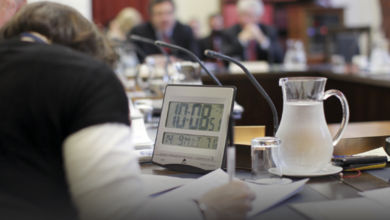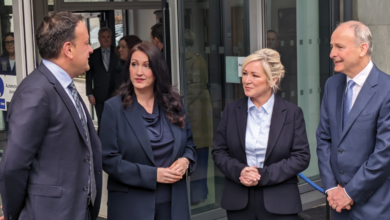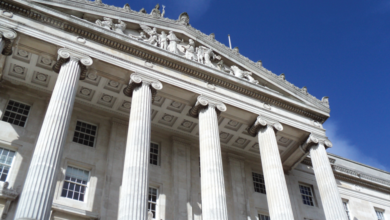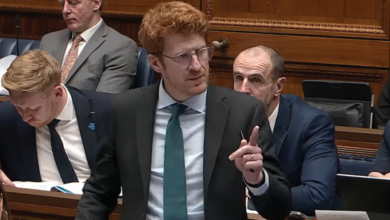Reconsidering representations of a complex past
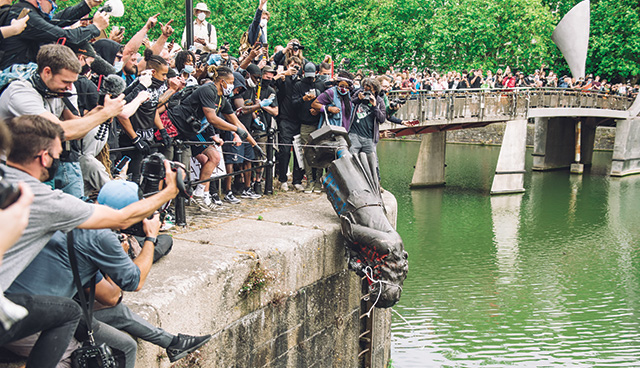
Academics Joanne Murphy and Sara McDowell outline the ongoing debate around the future of historic public memorials in Northern Ireland in the global context of greater recognition of their role in defining social spaces and civic cultures.
The killing of George Floyd in Minneapolis in May 2020 has instigated a global period of reckoning over issues of race, representation and belonging. Amid widespread protests against police brutality, cultural landscapes of official commemoration have been brought sharply into focus.
The legacy and memorialisation of leaders associated with slavery or colonial practices in public spaces is being re-examined across America and in some parts of Europe. Some statutes have been removed by force or pre-emptively to avoid street violence.
Before the death of Floyd, the United States had already engaged in a series of debates about the place of Confederate flags and statues in society. For many, the Confederate era represents the historic oppression of African-American communities: a legacy that continues to shape existing inequalities and experiences.
For others, the signs and symbols of the Confederacy are an integral part of America’s Southern heritage and should be retained. These opposing perspectives speak to broader issues surrounding identity and belonging in modern communities whose past is both contested and unsettled. As such, they raise questions at home and abroad about the role of historic public memorials in places where perspectives, legal structures and attitudes have changed, sometimes radically.
In addition, the rise of so called ‘culture wars’, ‘cancelling’ and ‘no platforming’ between groups with opposing views has led to further polarisation between left and right of the political spectrum.
Northern Ireland has a rich, if sometimes contentious, commemorative landscape. While much of this material acknowledges and remembers a past that is mediated through an ethno-nationalist lens, there is also, a rarely acknowledged and complex regional tie with the slave trade. Across the island of Ireland there is a plethora of statues, buildings and street-names that pay homage to key actors and figures involved in different aspects of slavery.
Examples include Larne Town Hall, named after Charles McGarel. A plantation owner and slave dealer, McGarel opposed the abolition of slavery and was paid tens of thousands of pounds as compensation for his own ‘slave holdings’. Amnesty International has recently lobbied the Council to change the name of the Hall.
Sir Hans Sloane was born in county Down and was married into a family that owed a sugar plantation in Jamaica. A memorial statue in his memory stands in Killyleagh.
In Newry, a statue to the pro-slavery advocate John Mitchel has attracted considerable local controversary. Mitchel, who is generally known for his newspaper ‘The United Irishman’ and revolutionary views also has a number of GAA clubs named after him.
More generally, questions have arisen over King Billy and the Crown’s historic role in the transatlantic slave trade and the need for holistic interpretations of history which take account of the complexities of the past and do not ignore uncomfortable facts.
The issue of what, how, when and where we remember (and forget) is often fraught with difficulty and subject to evolving socio-economic and cultural contexts. Signs, symbols and statues, often hiding in plain sight, assume heightened symbolic importance.
While so common as to be almost invisible, these cultural markers can influence and define social spaces and civic cultures in subtle ways.
So how should societies deal with contested narratives of the past? Do we simply remove statues and emblems that celebrate the historic oppression of one group by another? Should they be replaced and if so, with what and by who? Or should we rather leave them in situ as a reminder of power and inequality? As Prince (2020) notes: “Public sculptures and statues have been used to signpost, to exemplify what power looks like and to maintain the systems of power. Now, the public is looking at its representations of people and delving into history, instead of glossing over uncomfortable parts of the past and moving on.”
These debates are especially relevant to Northern Ireland as societies in transition from conflict often seek to renegotiate their public memorials as an integral part of the process of renewal. Statues and commemorative icons perform a communal function in reminding us of key moments and figures that are important to our history and identity.
It should be noted however, that such iconography is not necessarily representative of everyone in society, rather it often characterises narratives that are meaningful for a dominant group, at a particular time. They are less resonant and sometimes very challenging to those who seek to amplify alternative narratives. As we have seen in Spain, Bosnia and other regions of Europe that have experienced civil strife, street names, public monuments and civic buildings can become proxies for conflict and a way to keep historic contestation current, as society shifts and changes. It is also possible that the longevity and significance of public artefacts can be reinterpreted and renegotiated over time within the right circumstances.
Given Northern Ireland’s own history, these debates feed into what are persistent public debates about the memorialisation of our own contested past in public spaces. In 2013, a decision to fly the Union Flag from the City Hall only on designated days led to street protests, violence and the intimidation of council staff and local political figures. This level of destabilisation underlines the potential toxic potency of cultural and political symbols in societies still uneasy with their history.
Ironically, the process which led to the removal of the flag was only one part of a parallel inquiry exploring commemoration within the City Hall confines more generally. The other strand of the process successfully sparked an investment initiative to conserve, display and contextualise historic artefacts and emblems within the building.
These sensitive discussions had a markedly different outcome to the politically contentious issue of the flag. This demonstrates that there exists simultaneously and in tension both a civic ability to resolve sensitive issues of memorialisation and the ‘tinderbox’ potential of these matters if they are weaponised for other purposes.
Perhaps the approach of careful consideration, informed historical analayis and political maternity which allowed for a reframing of artefacts internally within Belfast civic buildings, provides a model for Northern Ireland, and more generally in these islands, as we move towards reconsidering representations of our complex past. Inevitability, how we live with our history and how it marks our public streetscapes has to be managed in a way which reflects not only historic understandings of society, space and people, but also modern interpretations of the same concerns.
One thing is for certain, these debates are not going away. As the novelist William Faulkner succinctly reflected: “The past is never dead, it’s not even past.”
Joanne Murphy is a Senior Lecturer in Queen’s Management School and Academic Director of the William J. Clinton Leadership Institute.
Sara McDowell is the Course Director of the BSc Geography programme at Ulster University and teaches Belfast key concepts and research methods in Human Geography (specialising in Political Geography).

